Notes: The main station building was on the up platform, this comprised the stationmaster's house and booking office. A separate timber waiting shelter was sited alongside the house with a second shelter on the down platform. There was a small goods yard on the up side to the north of the station with one siding running through a timber goods shed and running back behind the up platform to serve a cattle dock and pens. Three private sidings ran into the Orchard food preserving factory to the north of the station.
At one time trains only stopped at Histon by request. The goods service was withdrawn from Histon on 18th April 1966. The station was unstaffed from 6.3.1967.
After closure Histon was the only station on the line to retain its canopy and although the main station building was sold the station remained largely intact and unaltered until 2007 with only the small waiting shelter on the St. Ives platform being demolished.
 In 2004 a local campaigning group in Histon called Save
our Station has been formed to restore the station and save
it from demolition as proposed under the guided bus way scheme.
Volunteers cleared the track bed around the
station site and repaired and repainted the station buildings.
Their long term plan was to see the station returned to regular
rail services. This never happened and in the end the group disbanded. Eventually it was accepted there was no chance of stopping the guided bus way so the local campaign to save the station building restarted with the support of local residents and Councillors (Parish, District and County). In 2004 a local campaigning group in Histon called Save
our Station has been formed to restore the station and save
it from demolition as proposed under the guided bus way scheme.
Volunteers cleared the track bed around the
station site and repaired and repainted the station buildings.
Their long term plan was to see the station returned to regular
rail services. This never happened and in the end the group disbanded. Eventually it was accepted there was no chance of stopping the guided bus way so the local campaign to save the station building restarted with the support of local residents and Councillors (Parish, District and County).
Once it became clear that the station would eventually be demolished local residents and workers from an environmental group got permission to dismantle the crossing keepers hut which would be re-erected at a suitable location, this was completed over two weekends in August 2007.
In 2008 the station building was saved from demolition although the canopy was cut back and both platforms demolished during the construction of the guided bus way. In 2013 the building is boarded up and as yet no use has been found for it.
For latest information see the Histon Station web site
BRIEF HISTORY OF THE MARCH - CAMBRIDGE LINE
Most of the farmers' lines in the Fens were light in construction and late in completion but one line defied this pattern, the Wisbech, St Ives & Cambridge Junction Railway whose Bill passed through Parliament in 1846; the line was quickly built in an almost straight line across the Fens, opening from March to Wisbech on 3 May 1847. The southern section from Cambridge to St. Ives opened on 17th August 1847 with the middle section from St Ives to March opening on 1st March 1848. The independent company was incorporated into the Eastern Counties Railway in 1848 before completion of the St. Ives - March section and later taken over by Great Eastern Railway in 1862.
 |
The GER were frustrated when Parliament authorised a line from March to Spalding which opened on 1st April 1867. The line had originally been conceived by the GER but approval was authorized instead to the rival Great Northern Railway. Many years of quarrelling were finally resolved on 3rd July 1879 when the Spalding line and the March to St. Ives section of the Cambridge to Wisbech line was vested in the GN&GE Joint Railway.
 As a means of avoiding Ely, which at that period was greatly congested with traffic from six directions, the March, St Ives to Cambridge route had much to recommend it. Local traffic was largely agricultural but with the opening of the Doncaster to March line the route was busy with coal trains running from the East Midlands towards east London, these were lengthy and slow-moving but immensely profitable to the GER. As a means of avoiding Ely, which at that period was greatly congested with traffic from six directions, the March, St Ives to Cambridge route had much to recommend it. Local traffic was largely agricultural but with the opening of the Doncaster to March line the route was busy with coal trains running from the East Midlands towards east London, these were lengthy and slow-moving but immensely profitable to the GER.
Passenger traffic was always light however, as only market towns and villages were served and there were few through trains with expresses usually using the Ely line with Ely becoming the main GER interchange station in northern East Anglia.
Somersham was the only junction station between St Ives and March with the branch line to Ramsey High Street (later Ramsey East) opening on 16th September 1889.
 The Cambridge to March line proved reasonably popular through the first half of the 20th century but with the post war popularity of the car, passenger numbers began dropping through the 1950's. The Cambridge to March line proved reasonably popular through the first half of the 20th century but with the post war popularity of the car, passenger numbers began dropping through the 1950's.
Despite the demise of passenger and freight traffic the line became an important diversionary route. The Flying Scotsman, the Aberdonian and the Night Capital Express have all used the line and it was also used as a trial line for new railway technology such as concrete sleepers, continuous welded rail, multiple aspect signaling (traffic light style) and for experimental rolling stock during the changeover from steam to diesel.
In the 1960's eighty trains a day were timetabled. The last working steam train passed in 1963 and as passenger traffic fell, the coal freight from the north ceased with the enforcement of the Clean Air Act. The line from St. Ives – March closed to goods traffic in 1966 and to passengers on 6th March 1967 but the service from St. Ives to Cambridge survived the Beeching Axe despite the stations (except Histon) being sited some distance from the community they served. The passenger service between Cambridge and St. Ives survived until 5th October 1970.
The freight service remained open as far as Histon for seasonal deliveries of fruit to Chivers which ceased in 1983 and a second service as far as Fen Drayton was retained until 1992 because of a long term contract with the Amalgamated Road Stone Corporation of St. Ives for aggregates. In the 1970's, the train made a return trip there every work day though this had declined to once a week by the late 1980's.
There have been numerous campaigns to reopen the line and shortly after closure South Cambridgeshire District Council and Cambridgeshire County Council agreed to pay for the reinstatement of the passenger service between Cambridge and St. Ives but the decision was reversed at the last minute.
 Occasional passenger charters visited the branch until the late 1980's and in 1979 The Railway Development Society organised the first of the popular 'specials' from Swavesey to promote the reopening of the line with destinations such as Lowestoft and Christmas shopping in Stevenage; these continued until 1990 but the line was not formerly closed until 2nd August 2003. Following the final closure of the line most of the track remained in situ apart from the last few miles to St. Ives. The St. Ives bypass (A1096) which opened in 1980, was built on the course of the line from the north into St. Ives, although it just misses the site of the station, the remains of the station was cleared at this time. Occasional passenger charters visited the branch until the late 1980's and in 1979 The Railway Development Society organised the first of the popular 'specials' from Swavesey to promote the reopening of the line with destinations such as Lowestoft and Christmas shopping in Stevenage; these continued until 1990 but the line was not formerly closed until 2nd August 2003. Following the final closure of the line most of the track remained in situ apart from the last few miles to St. Ives. The St. Ives bypass (A1096) which opened in 1980, was built on the course of the line from the north into St. Ives, although it just misses the site of the station, the remains of the station was cleared at this time.
In 1994 the County Council put forward a proposal to purchase the land and the surviving track and restore a passenger service; this never happened. In the late 1990’s the Government launched the Cambridge to Huntingdon Multi-Modal Study (CHUMMS), chiefly to address the chronic local traffic congestion.
One of the proposals was for a guided bus way along most of the Cambridge - St. Ives route. There was also a further proposal to reinstate the railway but this was rejected by the council who claimed that the guided bus way was the only option on the table. The bus way would involve replacing the track with a concrete guideway and demolition of the stations to provide car parking. Buses will travel on the guideway along the disused railway line from St. Ives to Cambridge. They will then continue through Cambridge on normal roads and rejoin the guideway at Cambridge Railway Station to travel through to Addenbrooke's Hospital and Trumpington Park & Ride.
 In July 2003 a group called Cast.iron was formed putting forward a proposal to reopen the line from Cambridge to Huntingdon in opposition to the proposed guided bus way. They proposed to reopen the line in three stages. Initially they were hoping to reinstate a passenger service over the existing track between Cambridge and Swavesey but their long term plan was to electrify the line and extend the track back into Huntingdon with a reconnection to the East Coast Main Line providing a much-needed strategic link for local, regional, national and possibly international services for both passenger and freight traffic. In July 2003 a group called Cast.iron was formed putting forward a proposal to reopen the line from Cambridge to Huntingdon in opposition to the proposed guided bus way. They proposed to reopen the line in three stages. Initially they were hoping to reinstate a passenger service over the existing track between Cambridge and Swavesey but their long term plan was to electrify the line and extend the track back into Huntingdon with a reconnection to the East Coast Main Line providing a much-needed strategic link for local, regional, national and possibly international services for both passenger and freight traffic.
The bus way scheme went before a public enquiry in 2004 and despite local opposition and the campaign to reopen the line between Cambridge and St. Ives, construction started in 2007 with most of the remaining track being lifted. The bus way is due to open in spring 2009.
Sources: East Anglia Railways remembered by Leslie Oppitz - Countryside Books 1989
ISBN 1 835306 040 2 & Forgotten Railways Volume 7 - East Anglia by R S Joby - David & Charles
1985 ISBN 0 7153 7312 9.
Further reading: Branch Lines around March by Vic Mitchell etc. - Middleton Press 1983
ISBN 978 1 873793 09 1
Other web sites: Cast.iron - The Cambridge & St. Ives Railway Organisation.
Tickets from Michael Stewart
To see stations on the March - Cambridge line click on the station name: March, Wimblington, Chatteris, Somersham, St. Ives, Swavesey, Long Stanton & Oakington
To see stations on the Somersham - Ramsey East line click on the station name: Ramsey East & Warboys |

4.jpg)
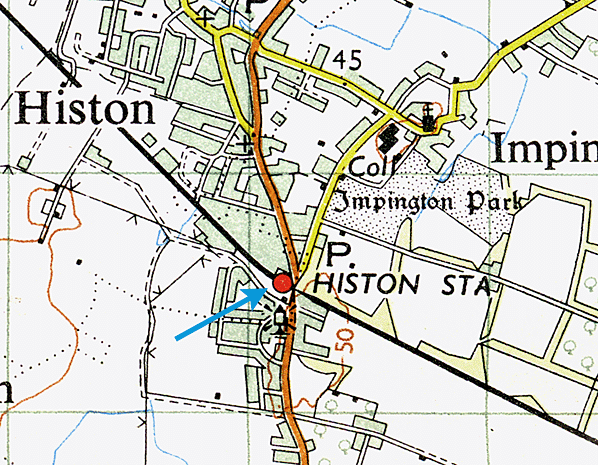
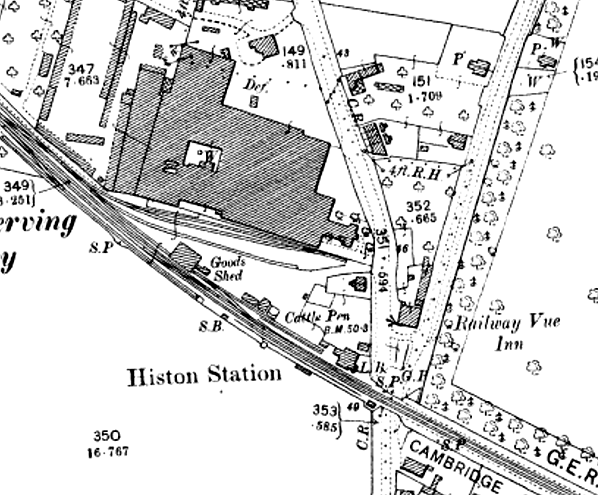
.jpg)
.jpg)
52.jpg)
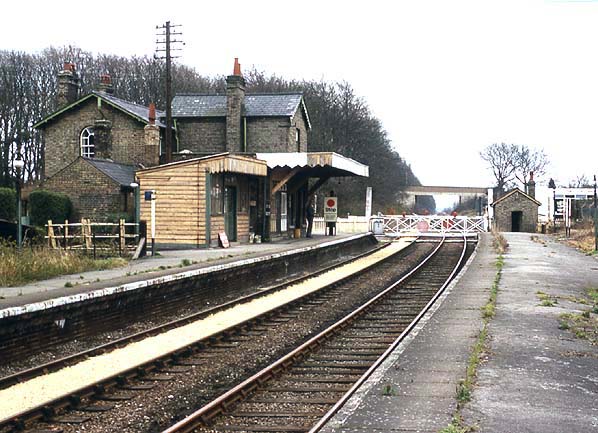
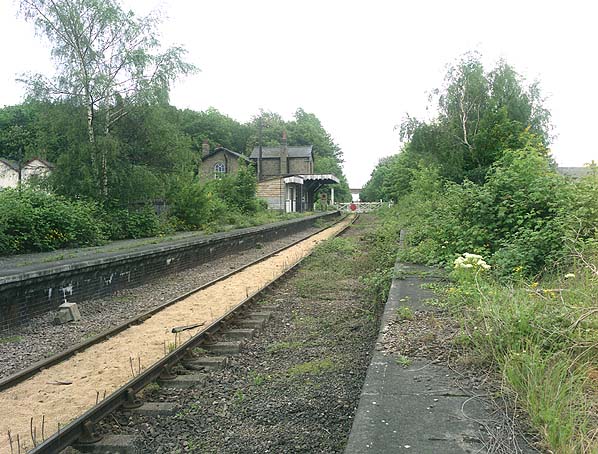
22.jpg)
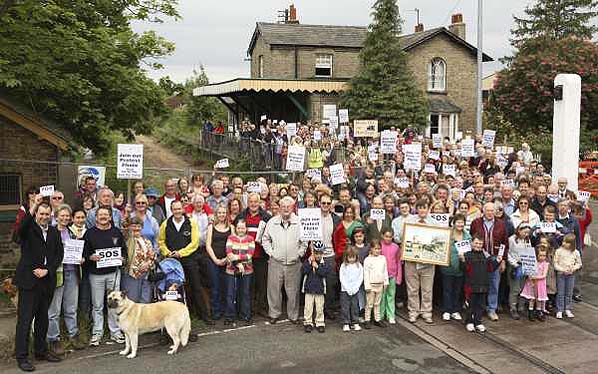
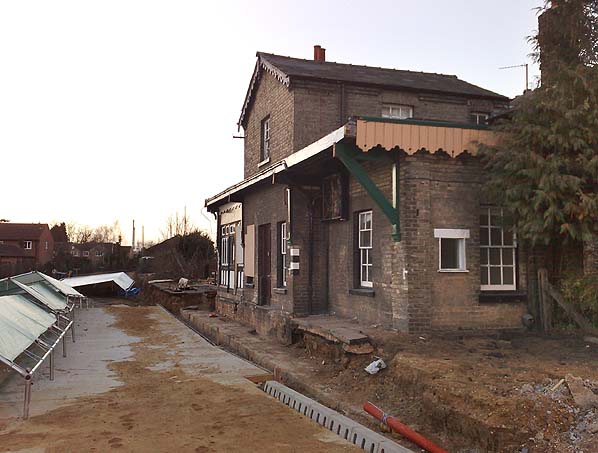
50.jpg)
 Home Page
Home Page  In 2004 a local campaigning group in Histon called Save
our Station has been formed to restore the station and save
it from demolition as proposed under the guided bus way scheme.
Volunteers cleared the track bed around the
station site and repaired and repainted the station buildings.
Their long term plan was to see the station returned to regular
rail services. This never happened and in the end the group disbanded. Eventually it was accepted there was no chance of stopping the guided bus way so the local campaign to save the station building restarted with the support of local residents and Councillors (Parish, District and County).
In 2004 a local campaigning group in Histon called Save
our Station has been formed to restore the station and save
it from demolition as proposed under the guided bus way scheme.
Volunteers cleared the track bed around the
station site and repaired and repainted the station buildings.
Their long term plan was to see the station returned to regular
rail services. This never happened and in the end the group disbanded. Eventually it was accepted there was no chance of stopping the guided bus way so the local campaign to save the station building restarted with the support of local residents and Councillors (Parish, District and County).
 As a means of avoiding Ely, which at that period was greatly congested with traffic from six directions, the March, St Ives to Cambridge route had much to recommend it. Local traffic was largely agricultural but with the opening of the Doncaster to March line the route was busy with coal trains running from the East Midlands towards east London, these were lengthy and slow-moving but immensely profitable to the GER.
As a means of avoiding Ely, which at that period was greatly congested with traffic from six directions, the March, St Ives to Cambridge route had much to recommend it. Local traffic was largely agricultural but with the opening of the Doncaster to March line the route was busy with coal trains running from the East Midlands towards east London, these were lengthy and slow-moving but immensely profitable to the GER. The Cambridge to March line proved reasonably popular through the first half of the 20th century but with the post war popularity of the car, passenger numbers began dropping through the 1950's.
The Cambridge to March line proved reasonably popular through the first half of the 20th century but with the post war popularity of the car, passenger numbers began dropping through the 1950's.  Occasional passenger charters visited the branch until the late 1980's and in 1979 The Railway Development Society organised the first of the popular 'specials' from Swavesey to promote the reopening of the line with destinations such as Lowestoft and Christmas shopping in Stevenage; these continued until 1990 but the line was not formerly closed until 2nd August 2003. Following the final closure of the line most of the track remained in situ apart from the last few miles to St. Ives. The St. Ives bypass (A1096) which opened in 1980, was built on the course of the line from the north into St. Ives, although it just misses the site of the station, the remains of the station was cleared at this time.
Occasional passenger charters visited the branch until the late 1980's and in 1979 The Railway Development Society organised the first of the popular 'specials' from Swavesey to promote the reopening of the line with destinations such as Lowestoft and Christmas shopping in Stevenage; these continued until 1990 but the line was not formerly closed until 2nd August 2003. Following the final closure of the line most of the track remained in situ apart from the last few miles to St. Ives. The St. Ives bypass (A1096) which opened in 1980, was built on the course of the line from the north into St. Ives, although it just misses the site of the station, the remains of the station was cleared at this time. In July 2003 a group called Cast.iron was formed putting forward a proposal to reopen the line from Cambridge to Huntingdon in opposition to the proposed guided bus way. They proposed to reopen the line in three stages. Initially they were hoping to reinstate a passenger service over the existing track between Cambridge and Swavesey but their long term plan was to electrify the line and extend the track back into Huntingdon with a reconnection to the East Coast Main Line providing a much-needed strategic link for local, regional, national and possibly international services for both passenger and freight traffic.
In July 2003 a group called Cast.iron was formed putting forward a proposal to reopen the line from Cambridge to Huntingdon in opposition to the proposed guided bus way. They proposed to reopen the line in three stages. Initially they were hoping to reinstate a passenger service over the existing track between Cambridge and Swavesey but their long term plan was to electrify the line and extend the track back into Huntingdon with a reconnection to the East Coast Main Line providing a much-needed strategic link for local, regional, national and possibly international services for both passenger and freight traffic.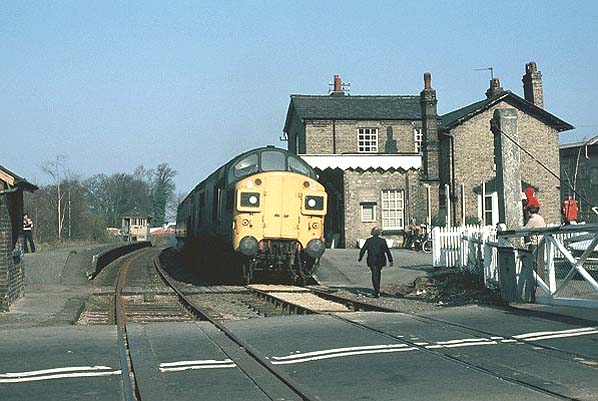
48.jpg)
40.jpg) Histon Station looking south east in September 2007
Histon Station looking south east in September 2007